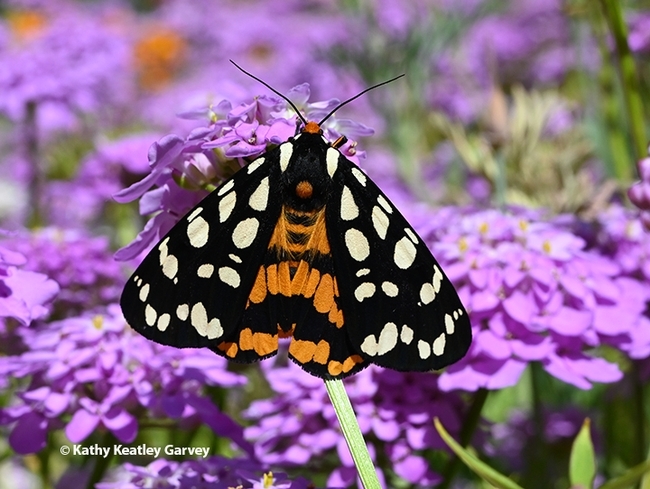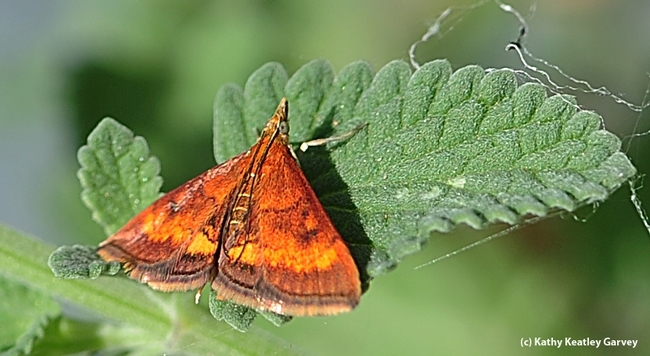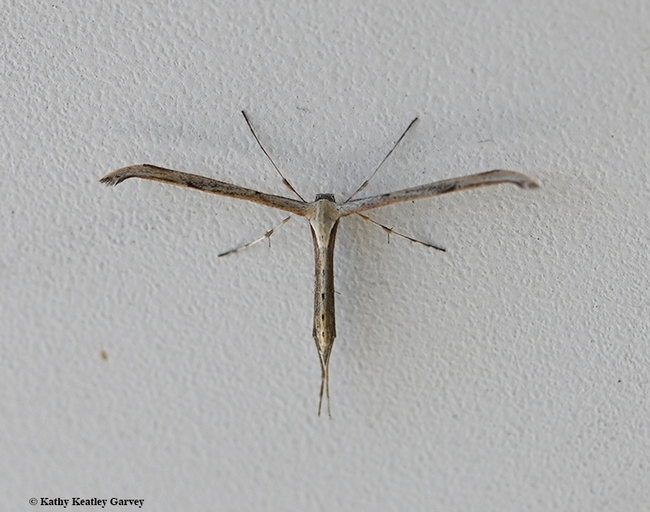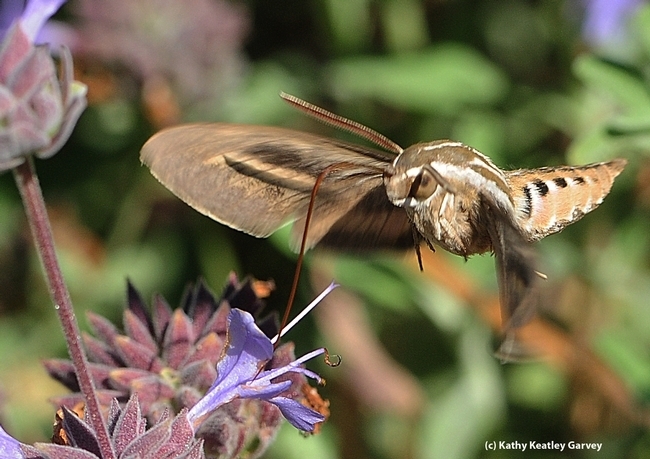Let's go mothing!
What's mothing? The National Moth Week website describes mothing as "a hobby for nature enthusiasts who use light or bait to attract moths to a location for observation and data collection."
So, in keeping with National Moth Week, the Bohart Museum of Entomology is hosting its annual Moth Night from 7 to 11 p.m. on Saturday, July 20 at its headquarters in Room 1124 of the Academic Surge Building, 455 Crocker Lane, UC Davis. Outside, Bohart research associate John "Moth Man" De Benedictus will set up a blacklighting display, complete with white sheet and a UV light to attract moths and other night-flying insects.
Inside, Jeff Smith, curator of the Lepidoptera collection at the Bohart, and his colleagues will displays moth specimens and answer questions.
The event is free and family friendly. Tabatha Yang, education and outreach coordinator, says that traditionally, "we serve hot chocolate an cookies."
Have you taken any images of moths lately? In the moth world, we mostly photograph the diurnal or day-flying moths.
Take the plume moth. In his book, California Insects, UC Berkeley entomologist Jerry Powell (1933-2023) explains why they're called plume moths..."because the forewings are deeply notched and the hindwings are divided into three linear parts, each with long scale fringes. When perched, the insects roll the forewings around the folded hindwing plumes, resulting in peculiar sticklike or craneflylike appearance, unlike any other moth." Most are nocturnal and are attracted to lights, Powell adds.
Another example of a moth that flies during the day an night is the white-lined sphinx moth (Hyles lineata).
You'll see those and more at the Bohart Museum's Moth Night.
The Bohart Museum, founded in 1946, houses a global collection of 8 million insect specimens, plus a petting zoo (think Madagascar hissing cockroaches, stick insects and tarantulas) and an insect-themed gift shop. Director is Professor Jason Bond, the Evert and Marion Schlinger Endowed Chair, UC Davis Department of Entomology and Nematology, and associate dean, Agricultural Sciences, UC Davis College of Agricultural and Environmental Sciences.
Attached Images:

This colorful moth is Arctia virginalis, Ranchman's tiger moth, a diurnal or day-flying moth commonly known as the Ranchman's tiger moth. In its larval stage, it's a wooly bear caterpillar, commonly found at the Bodega Marine Reserve and on the trails of Bodega Head, Sonoma County. (Photo by Kathy Keatley Garvey)

This is California Pyrausta Moth (Pyrausta californicalis), commonly known as "the mint moth." It feeds on plants in the mint family, including spearmint and peppermint. (Photo by Kathy Keatley Garvey)

This is a pterophorid plume moth (family Pterophoridae). The "T-square" shape is classic. (Photo by Kathy Keatley Garvey)

This is a white-lined sphinx moth (Hyles lineata), which flies during the day and night. (Photo by Kathy Keatley Garvey)